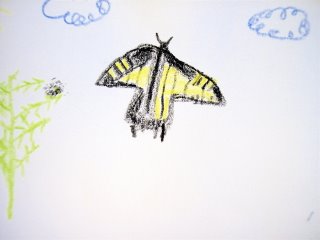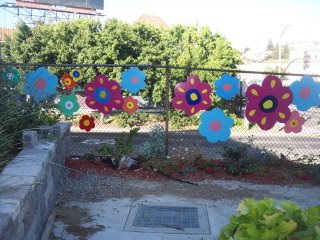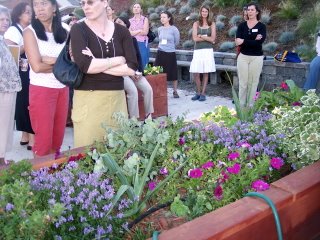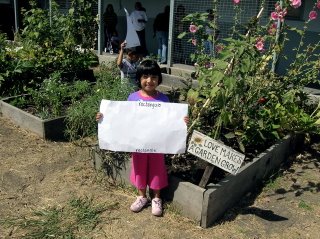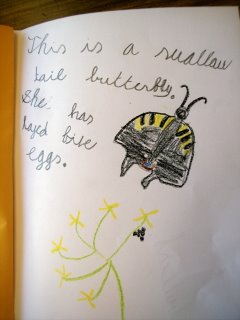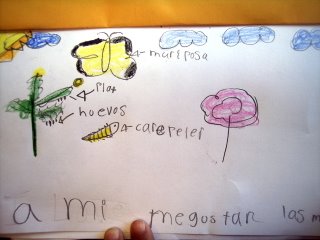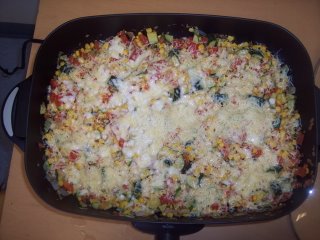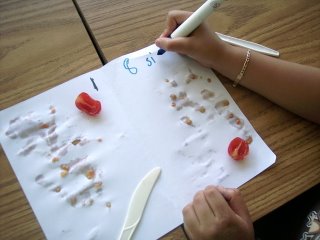
The students did this lesson from the
Math in the Garden book today. We started by listing the different parts of a plant. Then I asked them to estimate how many seeds they thought were in a sample small tomato. Then we went for a walk through the garden. I picked out several fruits, cucumber, corn, bean, and tomato to show the students that a fruit is the part of the plant that has the seeds. I brought extra tomatoes so everyone could taste.
When we came back to the class I gave pairs of students two halves of a small tomato. They each had a plastic knife and a sheet of paper to put the seeds out on to count. I asked them to count the seeds in their half and add that number to their partner's half. Then I asked them to write the number of seeds on the sheet of paper.
Most of the students were able to separate the seeds from the pulp of the tomato. Very few of the students used the knife as a counting and grouping device. Only one pair made a tally of the seeds as they were counting even though I had explicitly taught that in a previous lesson. Only three pairs completed the activity by recording their data on the sheet of paper.
I think I will do this activity again but use a different fruit next time. I will explicitly model the estimating, the counting, the tallying, and the recording.
